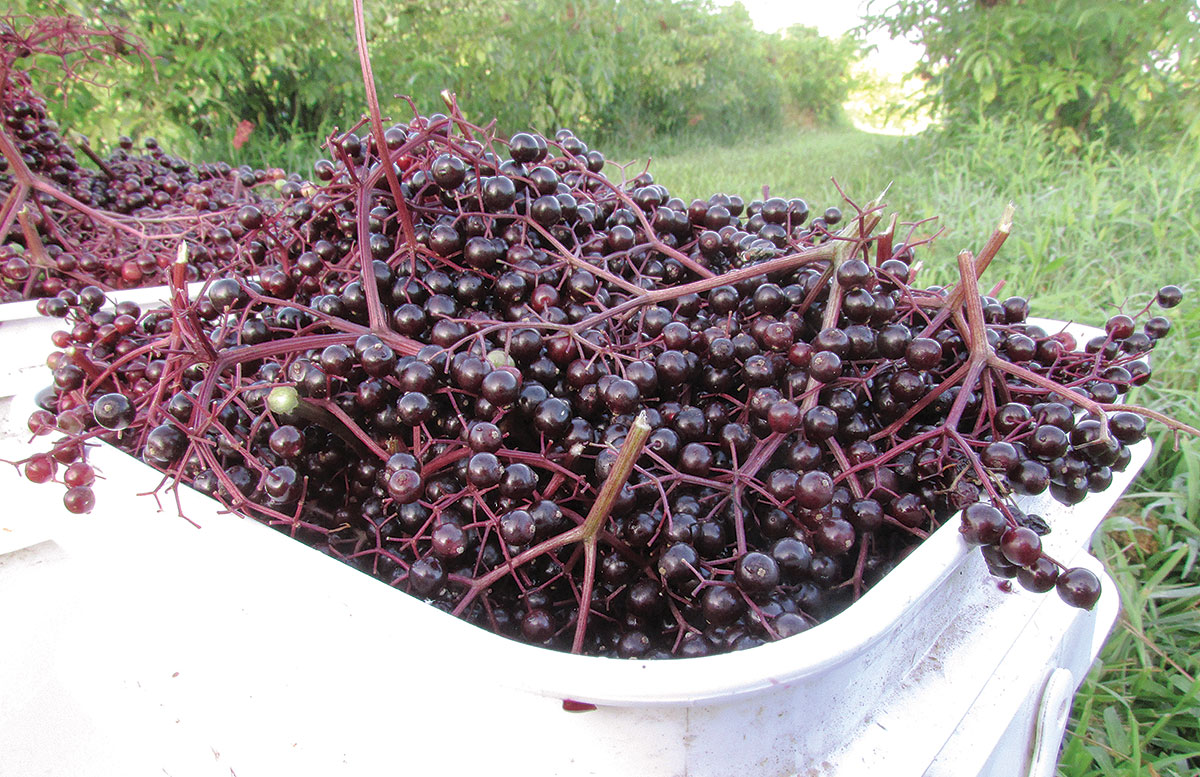 With names like Southern Comfort and Bourbon on the Rocks, a new client of Stacy and Jerimiah Gan knows from the beginning that Blackberry Ridge Boers is a unique Boer goat undertaking that includes a good bit of fun as well as being a serious family-run livestock operation.
With names like Southern Comfort and Bourbon on the Rocks, a new client of Stacy and Jerimiah Gan knows from the beginning that Blackberry Ridge Boers is a unique Boer goat undertaking that includes a good bit of fun as well as being a serious family-run livestock operation.
“Jerimiah had goats as he was growing up and his brother is into commercial goats and has 300 head but we got started in show goats,” Stacy explained while standing in the midst of own herd of about 50 Boer goats. “It means high maintenance with the grooming but with fewer animals, it is something I can do when my husband is deployed. The best part is that it is something that involves the whole family. Our oldest, Ethan, age 12, checks on the bucks daily and does the evening feeding. Madison, age 11, is in charge of the morning feeding and is very observant so she walks around and checks all the goats each day. Eight-year-old Melody makes sure all are watered daily and Mallory, our 6-year-old and youngest daughter, makes sure all the feed buckets are clean and helps everybody. There are not many businesses where all of your children can be part of it and it certainly helps build a sense of responsibility for each of them.”
Stacy continued, “The top three things to remember with goats is that they are very social animals so you can’t have just one or else they get lonely and depressed. Secondly, you need to carefully assess what you have the time and land for and finally, decide if you are interested in show animals or what somebody is going to eat for dinner. All of ours are show goats although some people buy them for pets.
“The difference then is also quantity. A commercial goat may be worth $100 but a show goat might carry a value of $1,000. To reach that though means they need to be perfect. You check their eyes, their teeth, their age, their feet and bone structure. A good solid animal looks like a box or block pattern, no splayed knees or hips,” and she demonstrated an imaginary box around one of her goats as she explained. “Ours are lead-broke so that by three months of age they can walk around a show ring and that’s how we sell them.
“I sell each animal based on each one’s merits. We sell most of them off our website through word-of-mouth and people know what we have. We started with three goats, eight years ago, and we now have about 50 Boers. We have them on 100 acres, but the goats don’t get all of that. My father-in-law’s cattle have most of it,” she added with a grin.
Stacy has both traditional goats – the well-known brown head with a primarily white body – but also colored or spotted goats, which is where the whiskey names come into the picture. “We got some of these from a breeder whose goats had various whiskey names and they asked us to continue the tradition when we got some of their spotted goats. One thing we’ve found is that the colored goats are less likely to get sick than the traditional ones.
“Their feed changes with the time of year. When bucks are working, they get as much food as they want of high-quality grain and an endless supply of fresh hay and foliage, weather permitting. When they are not working, they get as much grain as they want on a creep feeder with a higher percentage of fat and protein. The babies, of course, get as much feed as they want and the does are limited only in their first and second trimester so the babies don’t gain too much weight too fast. With show animals, the hair follicle development is very important, for instance and that actually takes place during the first trimester so how quickly they gain weight is a concern. Of course, you never want any of your animals to go hungry so Jerimiah also makes his own liquid feed mixture that includes beet pulp and grain feed and you know, as long as it is clean, the goats don’t care.”
She continued, “Because Boer goats are not native to this area, they are originally from South Africa, they are more susceptible to parasites and we check them daily for that as well as see to it that they get deworming medication every three months. The parasites are something manageable but you have to stay proactive. I have my own manuals for everything and I have a couple of people I call when a goat gets sick. Like everything else, I keep what they tell me in my manuals so that when it happens again, I’ve got the answer close at hand.”
Without a doubt, the most challenging time with her goats is kidding season. “You have 10, 20, or 30 new babies all in a span of just a few days so I’m sleeping in that barn for a couple of weeks. It is exciting, exhilarating and exhausting but these goats have a lot of character and that makes it fun.” Just like their owners.







